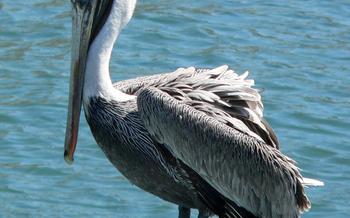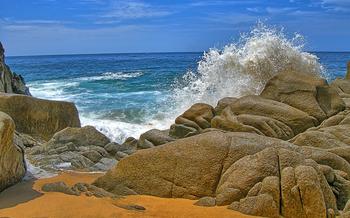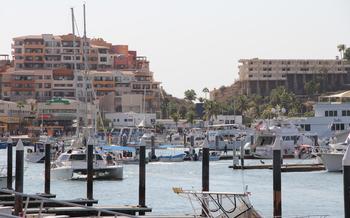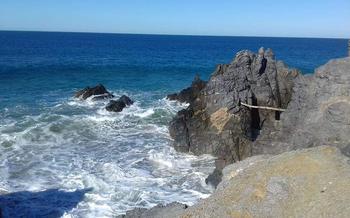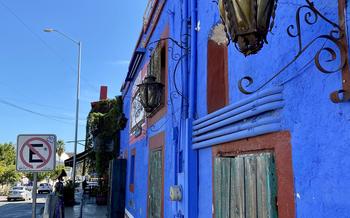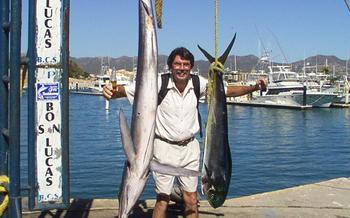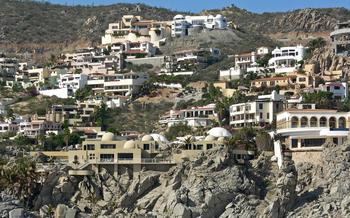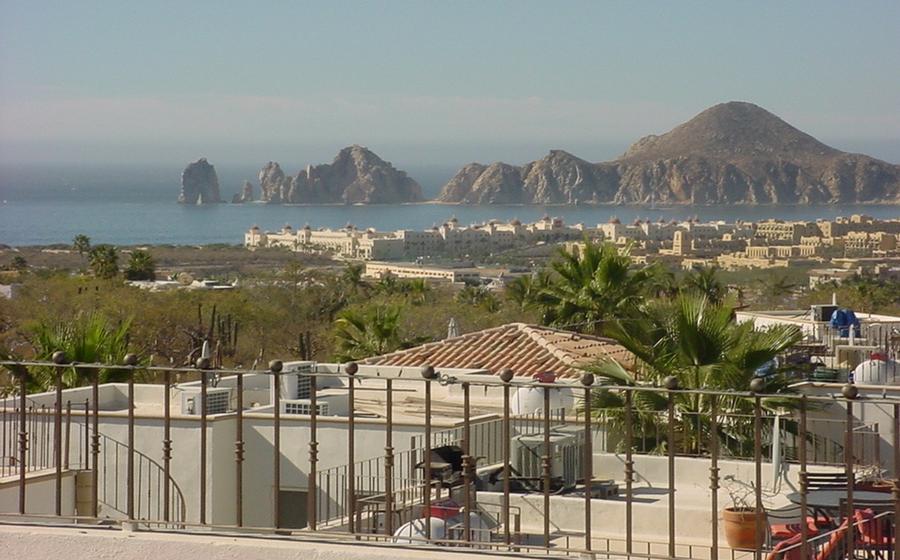
Cabo Trek
- Cabo Trek: An Overview
- Physical Requirements and Preparation
- Booking the Trek
- Accommodation and Camping
- Food and Water
- Safety and Precautions
- Choosing the Right Time to Trek
- Local Culture and Etiquette
- Photography Tips
- Flora and Fauna
- Historical and Cultural Landmarks
- Off-the-Beaten-Path Experiences
- Solo Trekking Tips
- Insider Tip: Hidden Oasis
Cabo Trek: An Overview
The Cabo Trek is an unforgettable adventure that takes you through the breathtaking landscapes of Cabo San Lucas, Mexico. This challenging yet rewarding trek offers a unique opportunity to immerse yourself in the region's natural beauty, diverse ecosystems, and rich cultural heritage. Whether you're an experienced hiker or a nature enthusiast seeking an unforgettable experience, the Cabo Trek promises an adventure of a lifetime.
The Cabo Trek was established in 1995 as a way to promote sustainable tourism and protect the region's delicate ecosystems. Since then, it has become a popular destination for hikers, backpackers, and outdoor enthusiasts from around the world. The trek covers a distance of approximately 50 miles (80 kilometers) and traverses a variety of terrains, including desert plateaus, rugged canyons, and pristine beaches. Along the way, trekkers will encounter diverse flora and fauna, historical landmarks, and cultural treasures.
The Cabo Trek offers a range of physical difficulty levels, catering to hikers of all abilities. From easy, beginner-friendly trails to challenging, multi-day treks, there is an option for everyone. Whether you prefer a leisurely stroll through the desert or a strenuous hike up steep mountain slopes, the Cabo Trek has something to offer.
Physical Requirements and Preparation
The Cabo Trek is a physically demanding adventure, requiring a moderate level of fitness and endurance. While prior hiking experience is not mandatory, it is highly recommended to ensure you can comfortably navigate uneven terrain, ascend and descend steep slopes, and carry a backpack for extended periods. Building up your stamina and strength through regular exercise and hiking in the months leading up to the trek will greatly enhance your enjoyment and safety on the trail.
Hydration and Sun Protection
The desert climate of Cabo San Lucas can be unforgiving, with intense heat and relentless sunshine. Proper hydration is crucial to prevent dehydration and heat-related illnesses. Aim to drink at least two to three liters of water per day, and carry a reusable water bottle or hydration pack to stay hydrated throughout the trek. Sunscreen is equally important to protect your skin from the harmful effects of UV rays. Apply sunscreen liberally and reapply every two hours, especially after swimming or sweating.
Essential Gear and Equipment
Pack light but efficiently, bringing only the essentials you need for the trek. Sturdy hiking boots or shoes with good ankle support are a must, as well as comfortable, moisture-wicking clothing. A hat, sunglasses, and gloves can provide additional sun and wind protection. A backpack with a comfortable fit and ample storage space is essential for carrying your supplies. Don't forget a first-aid kit, a headlamp or flashlight, a multi-tool, and a map or GPS device for navigation.
Acclimatizing to the Local Climate
To avoid altitude sickness and other health issues, it is important to allow your body to adjust to the local climate gradually. If possible, arrive in Cabo San Lucas a few days before the trek to acclimatize to the heat and altitude. Drink plenty of fluids, eat a healthy diet, and get regular rest to help your body adapt to the new environment.
Booking the Trek
Choosing the right tour operator for the Cabo Trek is essential for a safe and enjoyable experience. Several reputable companies offer guided treks, each with unique strengths and itineraries. Research different tour operators, read reviews from previous trekkers, and consider factors such as group size, guide experience, and safety record.
Tour durations typically range from 2 to 7 days, allowing trekkers to customize their adventure based on their fitness level and time constraints. Prices vary depending on the duration, group size, and inclusions, typically starting from around $100 per day. Most tour packages include meals, camping equipment, permits, and guide services. However, some may exclude items like transportation to the trailhead or personal gear, so it's essential to carefully review what's included before booking.
Advance booking is highly recommended, especially during peak season (November to April). Tour operators often have limited spaces, and securing your spot early will ensure availability and avoid disappointment. To book a trek, contact your chosen tour operator directly, providing them with your desired dates, group size, and any specific preferences or dietary restrictions you may have.
Accommodation and Camping
The Cabo Trek offers a range of accommodation options to suit different budgets and preferences. For those seeking comfort and convenience, there are several hotels and resorts located near the trailhead. These establishments offer a variety of amenities, including swimming pools, restaurants, and tour booking services.
For a more immersive experience, many trekkers opt to camp along the trail. There are several designated campsites available, equipped with basic facilities such as restrooms and picnic tables. Camping permits are required and can be obtained from the local authorities.
When choosing your accommodation, consider your budget, fitness level, and desired level of comfort. Camping offers a unique opportunity to connect with nature and enjoy the tranquility of the wilderness, but it requires carrying all your gear and being prepared for basic amenities.
Here are some tips for choosing the right accommodation for your Cabo Trek:
- Consider your budget: Accommodation costs can vary significantly, so it's essential to set a budget before you start booking.
- Choose a location that suits your needs: If you want to be close to the trailhead, look for accommodation near Cabo San Lucas or San Jose del Cabo. For a more secluded experience, consider camping in the backcountry.
- Book your accommodation in advance: Especially during the peak season, it's advisable to book your accommodation in advance to avoid disappointment.
- Pack the necessary gear: If you're camping, pack all the necessary gear, including a tent, sleeping bag, cooking utensils, and a first-aid kit.
Food and Water
Nourishment and hydration are essential considerations for a successful Cabo Trek. Tour operators typically provide a variety of meal options, catering to different dietary preferences and restrictions. These may include pre-packaged meals, freshly prepared camp cuisine, or a combination of both. For those with specific dietary requirements, it's advisable to inform the tour operator in advance to ensure their needs are met.
If you prefer to pack your own food, careful planning is crucial. Choose lightweight, energy-dense snacks that are easy to carry and won't spoil quickly. Nuts, granola bars, dried fruits, and energy gels are popular options. It's also important to pack a sufficient supply of water purification tablets or a portable water filter to treat water sources along the trail. Staying hydrated is paramount, especially in the warm and arid climate of Cabo San Lucas.
Safety and Precautions
The Cabo Trek is generally considered a safe and well-managed activity, but it's essential to be aware of potential risks and take necessary precautions. Tour operators prioritize safety by providing comprehensive briefings, using well-maintained equipment, and having experienced guides who are trained in first aid and emergency response. They also implement strict safety protocols, such as regular check-ins, group size limitations, and mandatory use of safety gear.
However, it's crucial to be prepared for potential hazards like uneven terrain, wildlife encounters, and sudden weather changes. Sturdy hiking boots with good ankle support are essential to prevent slips and falls. Be mindful of loose rocks and slippery surfaces, and use trekking poles for added stability. Carry a first-aid kit with basic supplies and know how to use them.
Wildlife encounters are common on the trek, but most animals are not aggressive if left undisturbed. Keep a safe distance from wildlife, especially large mammals like deer or coyotes, and avoid feeding or approaching them. In case of an encounter, stay calm, make noise, and back away slowly.
Weather conditions can change rapidly in the desert, so be prepared for both hot and cold temperatures. Wear layers of clothing that you can adjust as needed. Stay hydrated by drinking plenty of water throughout the day, and protect yourself from the sun with sunscreen, sunglasses, and a hat.
In case of an emergency, contact your tour guide immediately. They will have communication devices and a plan in place to respond quickly and effectively. Always carry a fully charged mobile phone and a power bank in case of emergencies.
Choosing the Right Time to Trek
Cabo San Lucas offers a diverse trekking experience throughout the year, each season presenting its own unique charm and challenges. The ideal time to trek is during the spring (March to May) and autumn (September to November). These shoulder seasons offer pleasant temperatures, with daytime highs ranging from the mid-70s to the mid-80s Fahrenheit (24 to 29 degrees Celsius). The humidity levels are also generally lower during these months, making for more comfortable trekking conditions.
In the summer (June to August), temperatures can soar into the 90s and humidity levels rise, making it more challenging to trek. However, this season also offers some advantages, such as fewer crowds and the chance to witness the region's vibrant marine life.
The winter (December to February) brings cooler temperatures, with daytime highs typically in the mid-60s to low 70s Fahrenheit (18 to 22 degrees Celsius). While the weather is generally mild during this time, there is a higher chance of rain, which can make the trails slippery and muddy.
It's important to note that weather conditions in Cabo San Lucas can be unpredictable, so it's always a good idea to be prepared for all types of weather. Regardless of the time of year, trekkers should plan to dress in layers, bring appropriate footwear, and stay hydrated.
By carefully considering the weather conditions and your personal preferences, you can choose the best time to trek in Cabo San Lucas and have a truly unforgettable experience.
Local Culture and Etiquette
When embarking on the Cabo Trek, it's crucial to be mindful of the local culture and customs to ensure a respectful and enriching experience. The people of Cabo San Lucas are known for their warm hospitality and welcoming nature. A simple "Buenos días" (Good morning) or "Buenas tardes" (Good afternoon) can go a long way in fostering positive interactions.
As you traverse the trail, you may encounter local communities engaged in traditional activities such as fishing, farming, or weaving. Take the time to observe and appreciate their way of life. If you're fortunate enough to be invited into a local home, remember to remove your shoes and accept any offered refreshments with gratitude.
Supporting local businesses and initiatives is a wonderful way to give back to the community. Purchase souvenirs from local artisans, dine at family-run restaurants, and engage in cultural activities that showcase the region's rich heritage. Learning a few basic Spanish phrases, such as "gracias" (thank you) and "por favor" (please), demonstrates your respect and willingness to connect with the locals.
Photography Tips
The Cabo Trek offers a plethora of breathtaking landscapes, diverse wildlife, and cultural encounters, making it a photographer's paradise. To capture the essence of your journey, here are some invaluable photography tips:
-
Embrace the Golden Hour: The soft, warm light during sunrise and sunset casts a magical glow on the surroundings, creating ideal conditions for capturing stunning landscape shots.
-
Wildlife Photography: Be patient and respectful while photographing wildlife. Use a telephoto lens to capture close-up shots without disturbing the animals.
-
Camera Settings: Experiment with different camera settings to achieve the desired results. Use a tripod for stability, especially in low-light conditions.
-
Group Photos: Choose a scenic backdrop and use a wide-angle lens to fit everyone in the frame. Use a self-timer or ask a fellow trekker to take the shot.
Flora and Fauna
The Cabo Trek offers an extraordinary opportunity to immerse yourself in the rich biodiversity of the Baja California Peninsula. The region is home to a diverse array of plant and animal species, many of which are endemic to the area. Keep an eye out for the majestic cardón cactus, with its towering height and distinctive shape, as well as the vibrant ocotillo, with its fiery red flowers.
The Cabo Trek also provides a glimpse into the fascinating world of desert wildlife. Look out for scurrying lizards, graceful roadrunners, and the occasional coyote or bobcat. Bird enthusiasts will delight in the melodious songs of the cactus wren and the colorful plumage of the vermilion flycatcher.
It is important to remember that the Cabo Trek is a fragile ecosystem, and it is crucial to practice responsible tourism. Stay on designated trails, avoid disturbing wildlife, and dispose of waste properly. By following these guidelines, you can help preserve the natural beauty of the region for generations to come.
Historical and Cultural Landmarks
The Cabo Trek traverses a region steeped in history and cultural significance. Along the trail, trekkers will encounter various historical sites and landmarks that offer a glimpse into the region's rich past. These sites include ancient cave paintings, abandoned mining settlements, and remnants of indigenous civilizations. The trek also passes through traditional villages where travelers can interact with local communities and learn about their customs and traditions.
One of the highlights of the Cabo Trek is the opportunity to visit the Sierra de la Laguna Biosphere Reserve, a UNESCO World Heritage Site. This vast protected area is home to diverse ecosystems, including tropical forests, deserts, and mountains. Trekkers can explore the reserve's many trails, spot endemic wildlife, and discover hidden waterfalls and swimming holes.
By incorporating historical and cultural landmarks into their itinerary, trekkers can gain a deeper understanding of the region's heritage and appreciate the unique blend of cultures that has shaped Cabo San Lucas.
Off-the-Beaten-Path Experiences
For those seeking a truly unique and immersive Cabo Trek experience, venturing off the beaten path offers a wealth of hidden gems and unforgettable encounters. Explore lesser-known trails that lead to secluded beaches, cascading waterfalls, and panoramic viewpoints. Discover hidden canyons, ancient cave formations, and pristine natural pools where you can swim, relax, and soak in the tranquility of your surroundings.
Seek out unique accommodations that offer a taste of local culture and history. Stay in traditional haciendas, charming guesthouses, or eco-friendly lodges that showcase the region's architectural heritage and sustainable practices. Indulge in authentic Mexican cuisine at local restaurants and markets, savoring the flavors and culinary traditions that make this region so special.
Engage in cultural activities and workshops that provide a deeper understanding of the local way of life. Learn about traditional crafts, music, dance, and storytelling. Participate in cooking classes, guided tours, and community events that connect you with the warmth and hospitality of the Cabo San Lucas people.
Support local conservation and community projects that are dedicated to preserving the environment and promoting sustainable tourism. Volunteer your time, make a donation, or simply choose tour operators that actively support these initiatives. By doing so, you contribute to the well-being of the local communities and ensure that the natural beauty of the Cabo Trek remains intact for generations to come.
Solo Trekking Tips
Venturing into the Cabo Trek as a solo traveler requires careful planning and heightened awareness. Prioritize your safety by informing friends or family about your itinerary and check-in regularly. Consider joining group treks organized by reputable tour operators to connect with like-minded individuals and ensure a sense of camaraderie. Pack additional safety gear, including a personal locator beacon or satellite phone, and make sure your communication devices are fully charged. Stay alert and trust your instincts; if something feels off, don't hesitate to alter your plans. Embrace the solitude and use this opportunity for self-reflection, but remember that safety should always come first.
Insider Tip: Hidden Oasis
Unveiling a hidden gem along the Cabo Trek, we stumbled upon a secluded beach that seemed untouched by time. Nestled between towering cliffs and lush vegetation, this oasis offered a sanctuary of tranquility and breathtaking beauty. The crystal-clear turquoise waters gently lapped at the pristine white sand, inviting us to dive in and embrace the refreshing embrace of the ocean.
To reach this hidden paradise, one must venture off the beaten path, following a narrow trail that leads through a dense jungle. The trek is moderately challenging, requiring a good level of fitness and sturdy hiking boots. However, the reward is well worth the effort, as you'll be greeted by a secluded paradise that feels like your own private slice of heaven.
As you bask in the tranquility of this hidden oasis, remember to respect the environment and local customs. Leave no trace of your visit, and be mindful of the delicate ecosystem that surrounds you. Share your experience responsibly, encouraging others to appreciate the beauty of this hidden gem while preserving its pristine condition for future generations.

